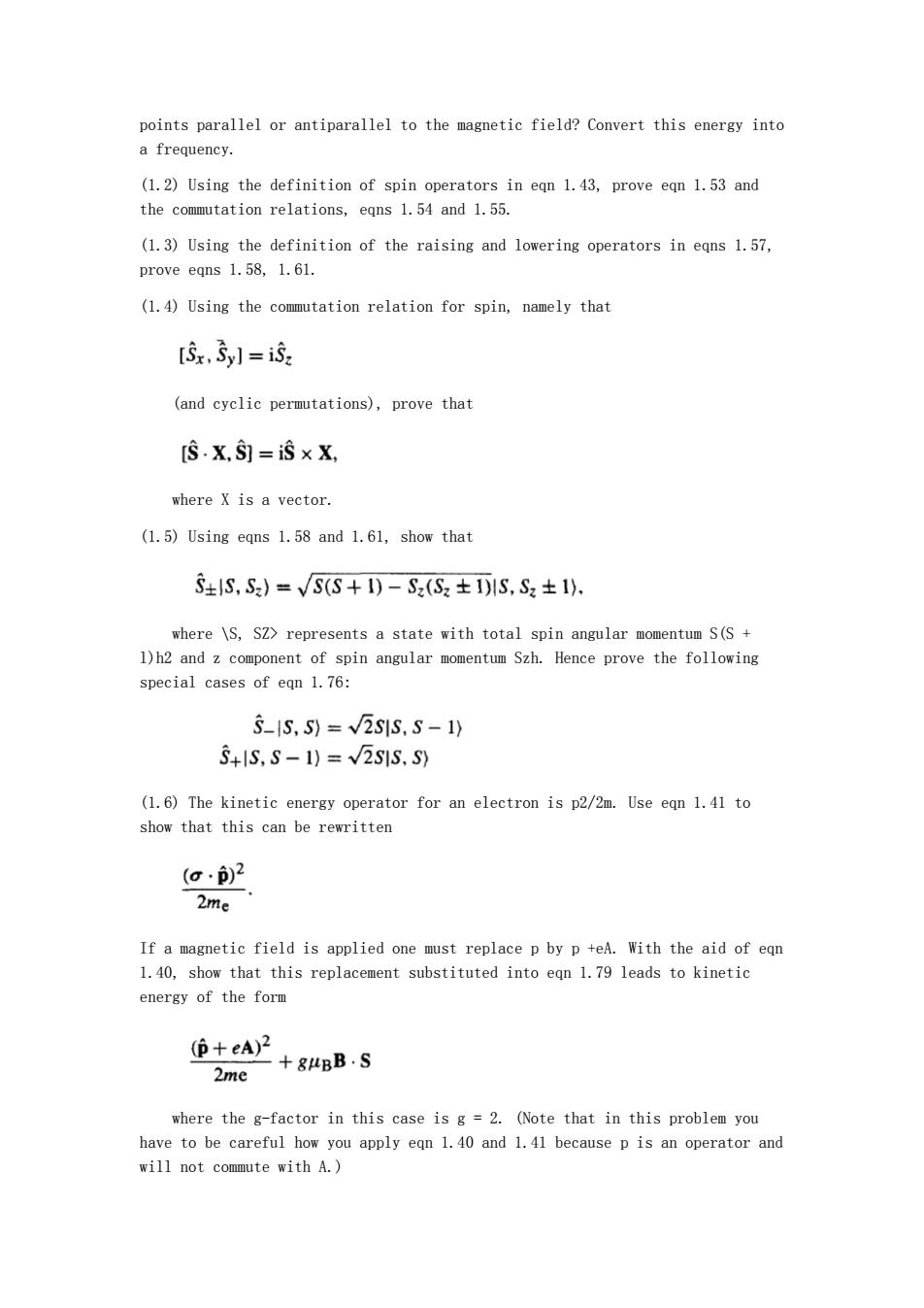正在加载图片...

points parallel or antiparallel to the magnetic field?Convert this energy into a frequency. (1.2)Using the definition of spin operators in eqn 1.43.prove eqn 1.53 and the commutation relations,egns 1.54 and 1.55. (1.3)Using the definition of the raising and lowering operators in eans 1.57, prove eans 1.58.1.61. (1.)Using the commutation relation for spin,namely that [,5l=i (and cyclic permutations),prove that [6.XS=i×X, where X is a vector. (1.5)Using eqns 1.58 and 1.61,show that S±lS,S)=√SS+I)-Sz(S2±S,S2±1. where \S,SZ>represents a state with total spin angular momentum S(S+ 1)h2 and z component of spin angular momentum Szh.Hence prove the following special cases of eqn 1.76: 5-1S,5)=√2S1S,S-1) 5+lS,S-1)=√2S1S.S (1.6)The kinetic energy operator for an electron is p2/2m.Use ean 1.41 to show that this can be rewritter (o·)2 2me If a magnetic field is applied one must replace p by p +eA.With the aid of ean 1.40,show that this replacement substituted into eqn 1.79 leads to kinetic energy of the form (+eA)2 2me +8uBB.S where the g-factor in this case is g=2.(Note that in this problem you have to be careful how you apply eqn 1.40 and 1.41 because p is an operator and will not commute with A.) points parallel or antiparallel to the magnetic field? Convert this energy into a frequency. (1.2) Using the definition of spin operators in eqn 1.43, prove eqn 1.53 and the commutation relations, eqns 1.54 and 1.55. (1.3) Using the definition of the raising and lowering operators in eqns 1.57, prove eqns 1.58, 1.61. (1.4) Using the commutation relation for spin, namely that (and cyclic permutations), prove that where X is a vector. (1.5) Using eqns 1.58 and 1.61, show that where \S, SZ> represents a state with total spin angular momentum S(S + l)h2 and z component of spin angular momentum Szh. Hence prove the following special cases of eqn 1.76: (1.6) The kinetic energy operator for an electron is p2/2m. Use eqn 1.41 to show that this can be rewritten If a magnetic field is applied one must replace p by p +eA. With the aid of eqn 1.40, show that this replacement substituted into eqn 1.79 leads to kinetic energy of the form where the g-factor in this case is g = 2. (Note that in this problem you have to be careful how you apply eqn 1.40 and 1.41 because p is an operator and will not commute with A.)